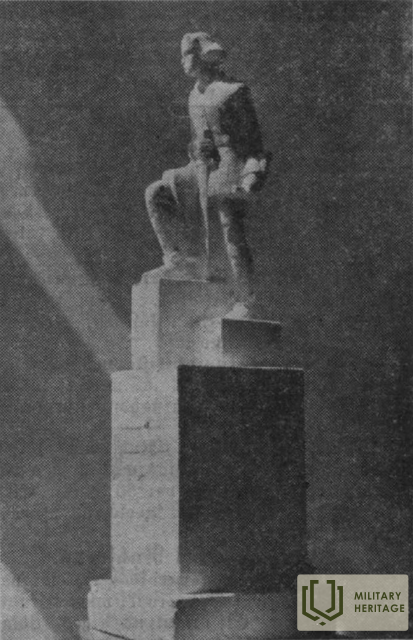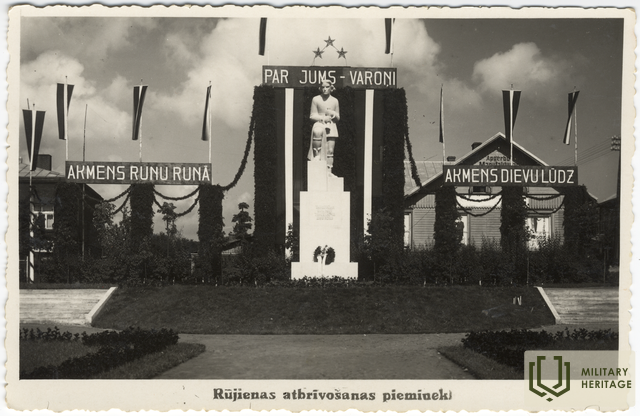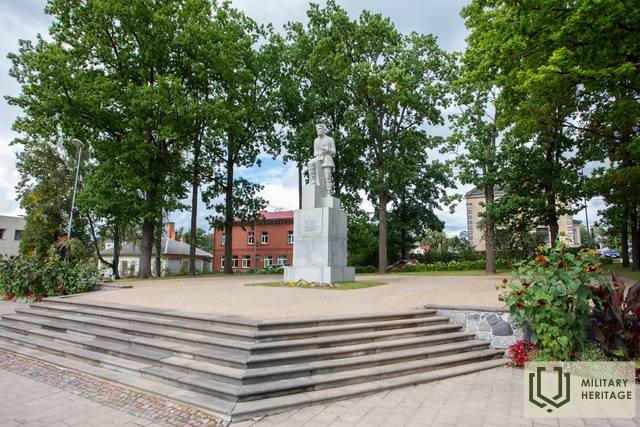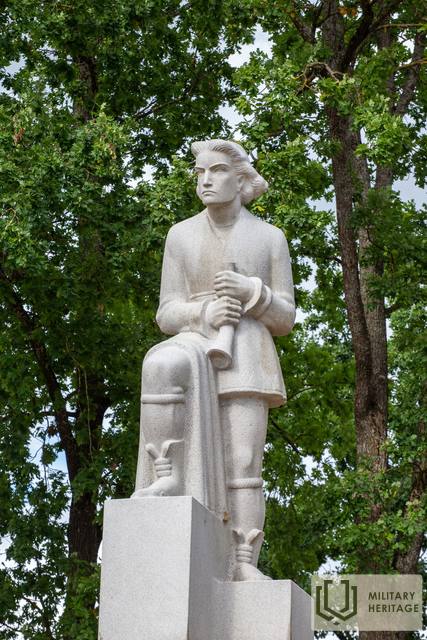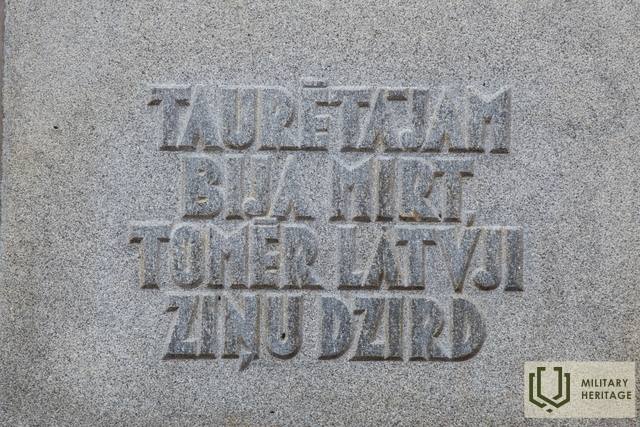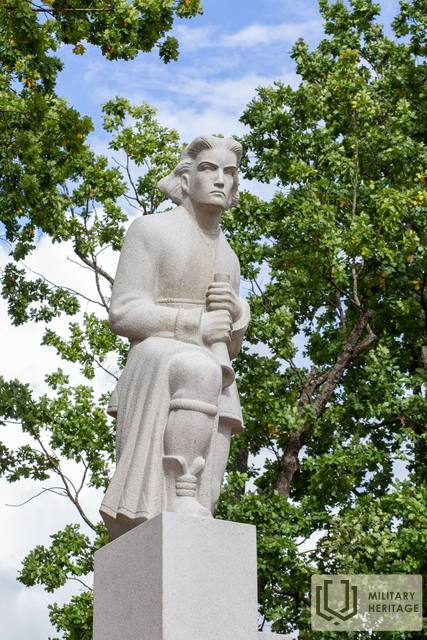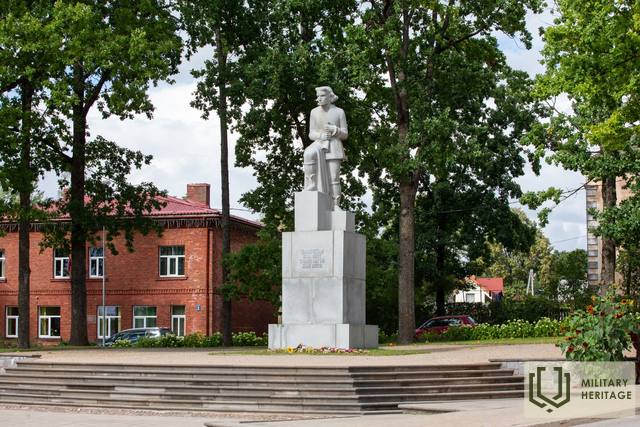Monument “Tālavas taurētājs” Memorial site
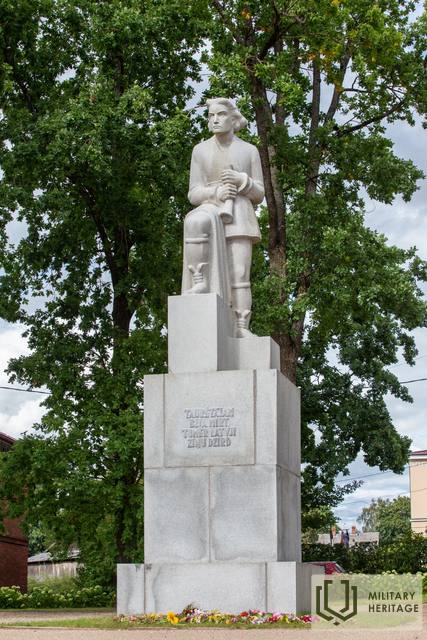

 152
152



Located in Rūjiena Center Square.
The three-meter-high image of an ancient Latvian guardian carved in gray Finnish granite, called the “Tālava trumpeter”, is placed on a three-meter-high granite pedestal, but the total height of the monument reaches 7.5 meters. In the initial sketches and models, K. Zemdega had placed a sword in his hands, which was later replaced by a trumpet. The monument was unveiled on August 15, 1937.
This monument reflects the difficult situation in the formation of our country and army, as well as in the assessment of these events. Immediately after the proclamation of the Latvian state, the Red Army invaded and the interim government of Kārlis Ulmanis established a refuge in Liepāja. In February 1919, with the help of the Estonian army, the liberation of Latvia from the north began and the first mobilization took place in the Rūjiena area for the Latvian troops formed in Tartu, which became the Northern Latvian Brigade under the command of Colonel Jorgis Zemitans. The Northern Latvian brigade fought not only against the Bolsheviks, but also against the Landeswehr and Iron Division in the battles of Cēsis. The soldiers of Northern Latvia, mobilized in the vicinity of Rūjiena, also fought in the subsequent battles for the War of Independence. After the war, the main laurels were won by General Jānis Balodis and the Southern Latvian Brigade he commanded, but he often forgot about the Northern Latvian Brigade. The monument to Rūjiena, which was planned in Rūjiena, was built for a long time, and the monument, unveiled in 1937, was officially popularized as a monument to the liberation of Rūjiena and the memory of fallen soldiers, not to mention the beginning of all regiments in Northern Latvia.
The monument is not only a popular sight for Latvian and Estonian tourists, which is to some extent a starting point for visiting several other places of remembrance of the War of Independence in Rūjiena, but "Tālavas taurētājs" is also a stopping place for Estonian and Latvian officials of various levels.
The monument to the liberation and fallen soldiers of Rūjiena, more commonly known as the “trumpet of Tālava”, was included in the list of cultural monuments protected by the state as an art monument of national significance on October 29, 1998 (monument protection registration number 4522).
Used sources and references:
Dr.hist.Tālis Vigo Pumpuriņš
https://karavirukapi.blogspot.com/2020/01/rujiena-atbrivosanas-piemineklis.html
Related timeline
Related topics
Related stories
About the National Patriot Chief Lieutenant Vili Gelbi
The fate of Senior Lieutenant Viļa Gelbe (1890-1919) reflects the difficult situation in the formation of our country and army, as well as in the evaluation of these events.
With the proclamation of the Latvian state on November 18, 1918, the War of Independence and the work of forming the armed forces also began. Vilis Gelbe, a naval lieutenant born in Kurzeme, was in the front ranks of Latvian volunteers.
Excerpt from the founding of the Northern Latvian Army on the Rūjiena side
The Army of Northern Latvia was a Latvian military formation during the Latvian War of Independence, which was established on the territory of Estonia and in the liberated regions of North Vidzeme from February 3 to March 31, 1919. Until July 1919, the brigade was subordinate to the Estonian Armed Forces Headquarters and the Commander-in-Chief of the Estonian Army in terms of logistics and operations. It was then merged with the Southern Latvian Brigade to form the Latvian Army.




